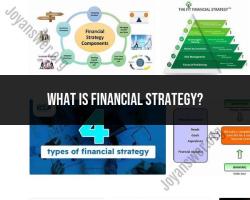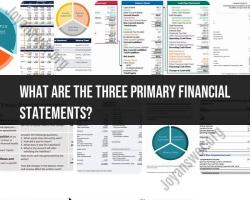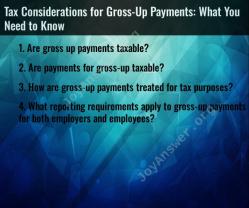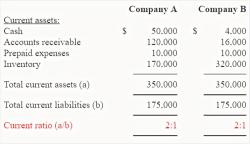How do I track monthly expenses?
Tracking monthly expenses is a crucial step in managing your finances effectively. Here are some essential techniques to help you track your monthly expenses:
Create a Budget:
- Start by creating a comprehensive budget that outlines your monthly income and all anticipated expenses.
- Categorize your expenses into fixed (consistent every month) and variable (may change month to month) categories.
Use a Tracking Tool:
- Choose a tracking tool that suits your preferences, whether it's a spreadsheet, budgeting app, or dedicated financial software.
- Some popular apps include Mint, YNAB (You Need A Budget), PocketGuard, and others.
Record Every Expense:
- Make it a habit to record every single expense, no matter how small. This includes cash transactions.
- Apps often allow you to link your bank accounts and credit cards, making automatic expense tracking easier.
Categorize Expenses:
- Categorize your expenses to understand where your money is going. Common categories include housing, utilities, groceries, transportation, entertainment, and miscellaneous.
Review Regularly:
- Set aside time regularly (weekly or bi-weekly) to review your expenses. This helps you stay on top of your spending and identify areas where you may need to cut back.
Compare Actual vs. Budget:
- Compare your actual expenses with your budget regularly. This helps you identify any discrepancies and adjust your spending accordingly.
Save Receipts:
- Keep and organize receipts, especially for cash transactions. This makes it easier to track and categorize expenses accurately.
Emergency Fund:
- Allocate a portion of your budget to an emergency fund. This can help cover unexpected expenses and prevent you from dipping into other budget categories.
Be Realistic:
- When setting your budget, be realistic about your spending habits. If you enjoy dining out or entertainment, allocate a reasonable amount to those categories.
Adjust as Needed:
- Life circumstances change, so be prepared to adjust your budget accordingly. If your income or expenses change, update your budget to reflect these adjustments.
Debt Management:
- Include debt payments in your budget. If you have loans or credit card debt, allocate a portion of your income to paying them off.
Stay Disciplined:
- Stick to your budget as much as possible. It may require discipline and adjustments, but the long-term financial benefits are worth it.
Remember, the key to successful expense tracking is consistency and regular review. By staying proactive and aware of your financial habits, you can make informed decisions to achieve your financial goals.
Here are the answers to your questions:
What methods or tools can be used to track monthly expenses effectively?
There are several methods and tools that can be used to track monthly expenses effectively. Here are a few of the most popular:
Spreadsheets: Spreadsheets are a simple and versatile way to track your expenses. You can create a spreadsheet with columns for the date, expense category, amount, and payee. Then, enter each expense as you make it.
Expense tracker apps: There are many different expense tracker apps available, both for desktop and mobile devices. These apps can automatically track your expenses by syncing with your bank accounts and credit cards. They can also help you categorize your expenses, set spending goals, and create budgets.
The envelope method: The envelope method is a traditional budgeting method that involves dividing your cash into envelopes for different spending categories. This method can be helpful if you tend to overspend, as it makes it difficult to spend more than you have budgeted for.
Are there apps or software available for tracking and categorizing monthly expenses?
Yes, there are many apps and software programs available for tracking and categorizing monthly expenses. Here are a few of the most popular:
Mint: Mint is a free expense tracker app that syncs with your bank accounts and credit cards to automatically track your expenses. It also offers budgeting tools, bill reminders, and other features.
Personal Capital: Personal Capital is another free expense tracker app that offers a wide range of features, including investment tracking, retirement planning, and a net worth calculator.
YNAB: YNAB (You Need A Budget) is a paid expense tracker app that is known for its user-friendly interface and its focus on budgeting.
GoodBudget: GoodBudget is a free budgeting app that is based on the envelope method.
How can individuals create a budget to monitor and manage monthly expenses?
To create a budget to monitor and manage your monthly expenses, follow these steps:
Track your expenses for a month: Start by tracking your expenses for a month. This will give you a good understanding of where your money is going.
Identify your spending categories: Once you have tracked your expenses for a month, identify your spending categories. This could include categories such as housing, food, transportation, entertainment, and debt payments.
Set spending limits: Set spending limits for each of your categories. Be sure to factor in your income and other expenses when setting your limits.
Track your progress: Regularly track your progress against your budget. This will help you identify areas where you can cut back on spending.
Here are some additional tips for creating and managing a budget:
Be realistic: Don't set unrealistic spending limits. Be sure to factor in your income and other expenses.
Review your budget regularly: Your budget is a living document. Be sure to review it regularly and make adjustments as needed.
Don't be afraid to make changes: If your budget isn't working for you, don't be afraid to make changes. Find a budgeting method that works for you and your lifestyle.












